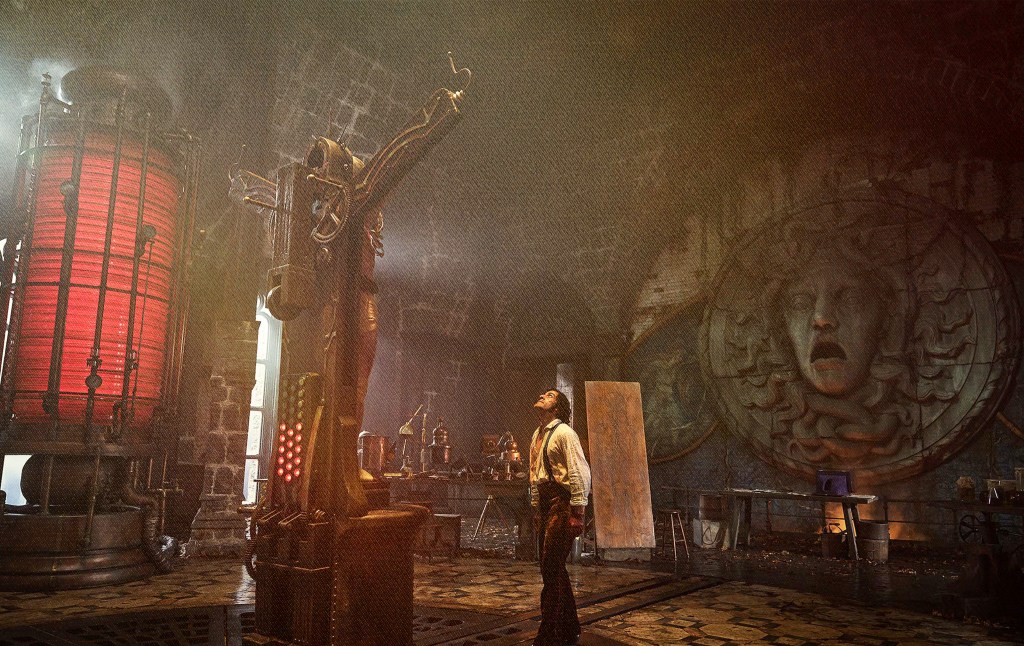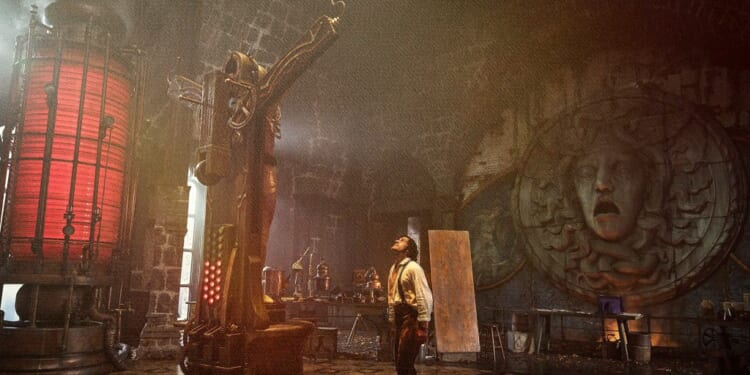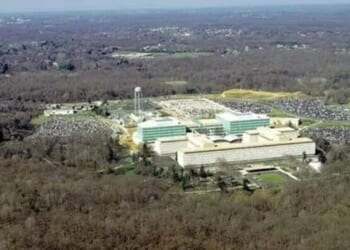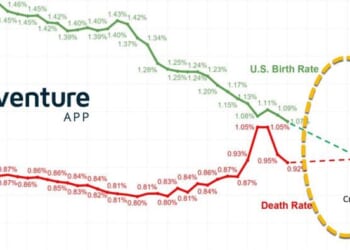
Has there been a good film adaptation of Mary Shelley’s 1818 novel Frankenstein? The most famous one, the 1931 version starring Boris Karloff as the monster and Colin Clive as his creator, has inspired nearly a century’s worth of Halloween costumes: a square-headed guy with bolts through his neck and giant black orthopedic shoes. But while you could say it took on a life of its own, this was a scaled-down rendering of Shelley’s sprawling story. Kenneth Branagh self-consciously created something closer to the literary version in 1994—he called his adaptation Mary Shelley’s Frankenstein for a reason—but he took his own share of unfortunate liberties and, worst of all, thought it was a good idea to have cameras spin constantly during every scene. (I saw it on opening weekend and am still dizzy.) Indeed, there’s a reason that plenty of people still say their favorite adaptation is Mel Brooks’ 1974 comedy Young Frankenstein.
The allure of the source material is obvious: Shelley’s novel is a frightening tale that also asks important questions about scientific ambition and what makes us human.
Now it’s Guillermo del Toro’s turn to bring these questions to the screen. His Frankenstein stomped into select theaters earlier this month and will make its way into your home through Netflix on November 7. A smart and entertaining film, it departs from the novel in significant ways even as it captures much of the original story’s sweeping scope and moral seriousness. It is both a very good adaptation and a successful film on its own terms.
It begins, like the novel (and Branagh’s version), near the North Pole, though we’re dropped in the year 1857 rather than Shelley’s “17—.” (If nothing else, this later setting gives the monster the opportunity to read Percy Bysshe Shelley’s sonnet “Ozymandias” without committing a grave anachronism.) The crew of a Russian exploratory vessel is trying to dislodge its ship from ice; the ambitious Captain Anderson (Lars Mikkelsen) is eager to continue his voyage, danger be damned. The crew members’ efforts are interrupted when they discover a wounded man (Victor Frankenstein, played by Oscar Isaac) on the ice, warning of some unknown danger. Before long, that danger arrives in the form of an enormous creature who, determined to seize Victor, wields superhuman strength against the crew members. They fend him off long enough for Victor to tell Captain Anderson the story of his life.
Cut to the opulent Frankenstein estate in Geneva. Young Victor was a mama’s boy, which you can tell by how much milk he drinks throughout the movie. (I hope Netflix was able to secure a deal with the American dairy industry.) His father, a great surgeon, is distant and cruel. When Lady Frankenstein dies giving birth to Victor’s brother William, Victor wonders what the point of his father’s surgical excellence is, if it couldn’t save her. Her tragic death sparks Victor’s desire to overcome the limits of human mortality.
Victor sets off to study in Scotland, where he challenges the limitations set by medical and academic authorities. Isaac plays Victor’s wide-eyed, wild-haired ambition well, especially during a theatrical demonstration of his early experiments. His gruesome ambition gets the attention of Henrich Harlander (Christoph Waltz), an arms dealer and proto-venture capitalist who offers to fund Victor’s research, asking only that Victor do him some unnamed favor in the future. Harlander also has the biological information Victor has been looking for (that the lymphatic system is the key to human reanimation, duh), and Harlander’s position as a merchant of war gives him convenient access to battlefields (presumably of the Crimean War) that furnish Victor with an unparalleled selection of fresh human corpses for his experiments. What could go wrong?
Harlander also happens to be the uncle of the woman Victor’s brother loves, Elizabeth. (Fans of the novel will see by now that del Toro creates entirely new characters while also repurposing some of Shelley’s.) If Victor’s research weren’t reason enough to dislike him, his pursuit of his brother’s fiancée seals the deal. Played by the perfectly named Mia Goth, Elizabeth becomes the moral counter to Victor and Harlander’s unbounded ambition and reckless experimentation. It doesn’t hurt that her sumptuous costumes add color to the film’s palette.
Well, you know how it goes from here, though del Toro’s details are new: Instead of a castle, Victor fashions his lab in a towering gothic mill. Alexandre Desplat’s beautiful score accompanies a graphic montage of Victor’s cadaverous adventures. del Toro lends the dark and stormy night of the Great Experiment additional tension by revealing Harlander’s true intentions and giving him what every cinematic arms dealer has coming to him.
del Toro has given us memorable monsters before, but his version of Frankenstein’s creature (Jacob Elordi) is in a league of its own, combining the deadly determination of Michael Myers with the self-healing abilities of Wolverine—not to mention the nobility and innocence of the Amphibian Man from del Toro’s Oscar-winning The Shape of Water. At the time of his creation, the pale and patchwork monster looks like the Engineers from the Alien franchise; by the end, he’s grown hair and looks more like Ziggy Stardust-era David Bowie.
Victor’s creation is physically impressive but mentally slow, and Victor is both afraid of and frustrated with him. Elizabeth recognizes the creature as human—del Toro’s most unfortunate departure from Shelley is perhaps a predictable one coming from the filmmaker who made a film featuring a woman who couples with a fish-man type thingy.
But her ardor does not persuade Victor, who gives up on his experiment in a manner that is appropriate only for scientists with very good insurance.
del Toro, like Shelley, gives the creature a chance to rebut Victor’s version of events with an account of his quest for companionship and self-knowledge. Discovering his gruesome origins, the creature vows to track down his creator and demand a mate. But del Toro doesn’t have it in him to make a reviled “other” anything less than entirely pure, which creates a plot hole in the film. In Shelley’s novel, the monster kills the people Victor loves. Here, he only uses violence against those who try to harm his few friends or impede his path to Victor. So while it makes sense for Shelley’s Victor to kill the monster out of vengeance, del Toro’s Victor doesn’t have a strong reason to seek retribution to the ends of the earth.
For all of his innovations, though, del Toro’s adaptation recognizes the greatness of its source material and does not lose sight of the themes and ideas that make Shelley’s novel so enduring. The film arrives when some of the most significant technological advances relate to the creation of human-like intelligence—and as transhumanists seek to transcend the limits of human biology—so I wonder if del Toro was tempted to be more explicit in connecting the film to modern debates by creating a sort of “FrAInkenstein.” But wanting to play God is an old human fault, not a new one, and del Toro wisely tempers his own ambitions and lets Shelley’s universality speak for itself.

















